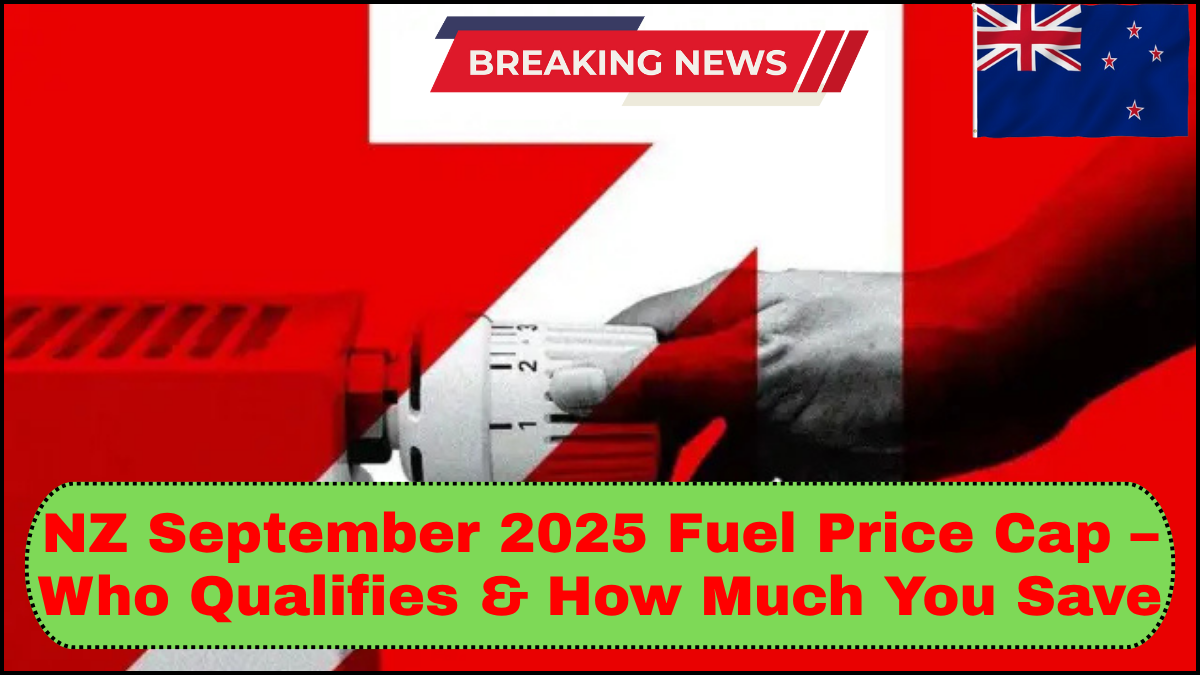New Zealanders are set to get relief at the pump starting September 2025, thanks to a new government policy designed to ease the burden of rising fuel costs. The Fuel Price Cap NZ September 2025 initiative is a targeted measure that limits the price per litre of fuel for qualifying individuals and households, helping reduce transport costs for the most vulnerable.
This guide breaks down who qualifies, how much you can save, and how the petrol subsidy scheme integrates with the cap to ensure maximum benefit for those who need it most.

What Is the NZ Fuel Price Cap for September 2025?
The Fuel Price Cap NZ September 2025 is a temporary but impactful measure introduced by the Ministry of Energy and Transport. It sets a ceiling on the retail price of petrol and diesel for eligible New Zealanders. Unlike general fuel tax reductions, this cap is not universal. It’s aimed at supporting low- to middle-income households, essential service workers, and rural residents who are disproportionately affected by transport costs.
The cap fixes the maximum pump price at $2.20 per litre for 91-octane petrol and $2.10 per litre for diesel, significantly below current market rates, which have hovered around $2.85 to $3.10 in recent months.
Who Qualifies for the September 2025 Fuel Price Cap?
Not everyone will be able to take advantage of the capped fuel rates. Eligibility is assessed based on a range of factors:
1. Income Thresholds
Households earning below $90,000 annually (or $130,000 for dual-income households) are eligible. The policy aligns with income brackets used in other support programs such as Working for Families.
2. Employment Type
Priority is given to:
-
Essential workers (healthcare, education, public safety)
-
Gig workers and contractors who rely on personal vehicles
-
Small business operators who use private vehicles for delivery or transport
3. Geographic Location
Those living in rural or remote areas where public transport is limited will be prioritised. This addresses long-standing issues of regional inequality in fuel access and cost.
4. Vehicle Ownership and Usage
To prevent abuse, only registered private vehicles used primarily for personal or work-related transport (not luxury or recreational vehicles) are covered under the scheme.
How the Fuel Price Cap Works
Eligible participants will receive a digital fuel card or QR code linked to their verified account. When used at participating service stations, this card will automatically apply the fuel price cap at the point of sale. The government reimburses the retailer for the difference between the market price and the capped rate.
How Much Can You Save?
Savings will vary depending on fuel consumption, but here’s a typical example:
-
Average monthly fuel use: 120 litres
-
Market rate per litre (91 petrol): $2.95
-
Capped rate: $2.20
-
Savings per litre: $0.75
-
Monthly savings: $90
-
Annual savings: Over $1,000
These savings can significantly ease household expenses, especially for families juggling transport, food, and utility bills.
Integration with the Petrol Subsidy Scheme
The petrol subsidy scheme works hand-in-hand with the fuel price cap. While the cap provides upfront savings at the pump, the subsidy scheme offers additional rebates for users who travel frequently or live in underserved regions.
For instance:
-
Frequent drivers (over 1,500 km/month) may receive an additional quarterly rebate.
-
Rural drivers can claim back up to 10% of their total annual fuel expenditure, subject to proof of address and vehicle use.
These subsidies are processed through Inland Revenue and will appear as credits in tax returns or direct transfers.
Benefits Beyond the Wallet
Apart from direct cost savings, the policy also encourages:
-
Reduced urban congestion by supporting remote workers
-
Stronger regional economies through fairer fuel access
-
Environmental accountability, as the cap is tied to limits on fuel consumption and monitored emissions reporting
FAQs
Q1: How long will the Fuel Price Cap NZ September 2025 last?
A: The initial duration is six months, from September 1, 2025, to February 28, 2026, with a possible extension depending on global oil prices and economic conditions.
Q2: Can I apply for both the fuel cap and the petrol subsidy scheme?
A: Yes. If you meet the criteria, you can benefit from both programs simultaneously, increasing your savings.
Q3: Are hybrid or electric vehicle owners eligible?
A: No. The scheme is specifically designed for petrol and diesel vehicle owners who are impacted by fuel price volatility.
Q4: Do I need to reapply monthly?
A: No. Once approved, your eligibility remains valid for the duration of the program, unless your income or vehicle status changes.
Q5: Which fuel stations are participating?
A: Most major fuel retailers including Z, BP, Caltex, and Mobil have signed on. A complete list will be available on the official government website.
click here to learn more